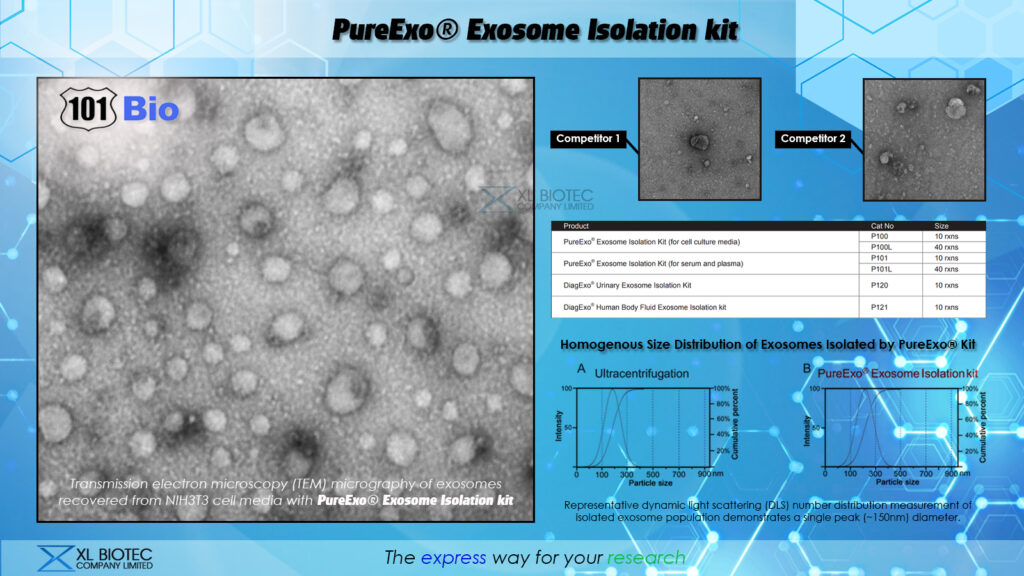Promotions
Exosome Purification Kits from 101Bio

History of Exosomes in Therapy
Exosomes, tiny extracellular vesicles secreted by most cell types, have garnered significant attention in the past few decades. Historically, they were merely considered cellular waste products. However, as understanding evolved, their role in cell-to-cell communication became evident, opening doors to their therapeutic potential.
Exosomes as Therapeutic Agents
Exosomes carry nucleic acids, proteins, and lipids, enabling them to transfer genetic and molecular information. Their ability to act as natural carriers has led researchers to explore them as potential delivery vehicles for therapeutic agents. In cancer therapy, for instance, exosomes can deliver specific molecules to target cancer cells without affecting healthy cells, showcasing their precision and potential to minimize side effects.
Exosome Purification Kit: A Game-Changer
With the rising interest in therapeutic applications of exosomes, the need for efficient and consistent isolation methods became apparent. Enter the exosome purification kit. These kits have simplified the once complex process of isolating exosomes from biological fluids or cell culture supernatants. Leveraging the exosome purification kit ensures the recovery of pure and intact exosomes, vital for consistent therapeutic results.
Using an exosome purification kit not only speeds up the research process but also ensures the reliability of the derived exosomes. Consistency is crucial when studying the therapeutic potential of any agent. Therefore, the availability and widespread adoption of the exosome purification kit have significantly propelled advancements in exosome-based therapies.
Challenges and Future Prospects
Despite the promising therapeutic applications of exosomes, challenges remain. There’s a need to better understand their biological roles, optimize exosome loading with therapeutic agents, and enhance targeting efficiency. The exosome purification kit, while invaluable, also needs continuous refinement to cater to the diverse sources of exosomes and to improve yield and purity.
However, with the growing interest in exosome research and the availability of tools like the exosome purification kit, the future seems promising. Innovations are anticipated in both the therapeutic application of exosomes and the techniques used in their isolation and characterization.
Conclusion
Exosomes have transitioned from being considered cellular debris to potential therapeutic powerhouses. Their natural delivery capability, combined with advancements like the exosome purification kit, places them at the forefront of next-generation therapies. As research deepens and technology evolves, the role of exosomes in medicine is set to expand significantly.

